In 2024, 133 towers over 200 meters were completed worldwide, according to CTBUH 2025 Trends & Forecasts report. While China continued to lead with 91 completions, new geographies such as Egypt, Turkey, and India signaled a broader global shift in high-rise development. Among the year’s most notable projects was Cairo’s Iconic Tower — at 393.8 meters, the tallest building completed globally and the first supertall in Africa.
How do you represent a 300-meter tower that combines multiple programs, responds to environmental standards, reflects cultural context, meets local regulations, and remains legible across scales — from skyline to street? These are the challenges tower rendering faces today, and the answers are explored in this article.

Understanding Tower Rendering and Its Business Value
What a tower represents and how it needs to be shown depends heavily on where it’s being built. In cities like New York, Singapore, or Sydney, where demand for office space remains high, rendering helps frame towers as investment assets with clear commercial logic. In markets like Bangkok, Warsaw, Stockholm, or Dubai, where residential and hospitality programs are gaining ground, the emphasis shifts: visuals need to convey livability, atmosphere, and local relevance. Understanding this dynamic is key, and tower rendering becomes a way to speak the language of each market, matching architectural vision with economic reality.
What Is Tower Rendering and How It Supports Modern Architecture
Tower rendering is a technical and communicative process within architectural visualization that models and represents high-rise buildings—typically those over 100 meters tall—within their future urban and environmental context. It is used across design, regulatory, and commercial workflows to support the development and delivery of complex vertical architecture.
By integrating geometry, material expression, lighting behavior, and urban data, tower rendering enables the evaluation of spatial performance, façade articulation, environmental impact, and visual prominence. It supports early concept development, stakeholder coordination, planning approvals, impact assessments, and pre-construction marketing.
This form of visualization is widely applied in commercial office towers, high-end residential developments, and large-scale mixed-use projects—serving as both an analytical and narrative tool in the contemporary architectural process.
Residential vs Commercial Tower Rendering: Key Differences
Visualization strategies for tower projects vary significantly based on program and typology. In residential high-rises, renderings emphasize human scale, domestic atmosphere, and spatial comfort. Key visual cues include morning and evening lighting, outdoor terraces, landscape integration, privacy gradients, and a consistent narrative of daily life. The goal is to evoke livability and emotional resonance while maintaining architectural clarity.
In contrast, commercial and mixed-use towers emphasize structural expression, circulation, and brand identity. Commercial Architectural 3D Rendering Services, including office renderings, reveal how façade systems, vertical circulation, and entry sequences interact with the urban context, while expressing the project’s form, material logic, and spatial organization to underscore its institutional presence or commercial intent.
Architectural Visualization as a Tool for Urban Transformation
Rendering is used in urban planning to evaluate how high-rise buildings affect their surroundings before construction begins. It provides a visual basis for analyzing a tower’s influence on mobility patterns, light and shadow behavior, green space continuity, and sightlines within the city.
These visual studies are often included in zoning packages, environmental assessments, and public planning reviews. When modeling density, shading, solar access, or visual impact, rendering serves both analytical and communicative functions—linking geometry and context through visual evidence.
To gain a more complete understanding of a project’s spatial and environmental impact, 3D Site Plan Rendering Services can be integrated. These services add contextual depth by visually articulating site layout, landscape integration, circulation paths, and surrounding infrastructure—making the overall vision clearer for planners, stakeholders, and the public.
How 3D Rendering Helps Communicate Vision to Stakeholders
Rendering makes architectural intent legible to a broad audience. In the context of tall buildings, it helps convey key design decisions—scale, massing, façade logic, and spatial organization—without requiring technical background or verbal interpretation.
Whether presented to planning authorities, financial partners, or the general public, high-quality visualization allows stakeholders to understand the proposal on its own visual terms. It reduces ambiguity, supports alignment across disciplines, and strengthens project communication throughout all stages of development.
Marketing Advantages of High-Quality Office Tower Renders
High-end tower renders are used in pitch decks, tenders, leasing strategies, investor roadshows, and digital marketing campaigns.
At early stages, renderings support capital structuring, entitlement negotiations, and tenant targeting, helping to establish credibility and clarity around the project vision. As development progresses, they evolve into core elements of the building’s brand identity, shaping its market perception and reinforcing value during leasing, media coverage, and public engagement.
Well-executed renderings bridge the gap between technical planning and strategic storytelling—positioning the tower as a defined, desirable, and investable asset in a competitive environment.
Real Estate Pre-Sales: The Power of Photorealistic Towers
The pre-sales phase begins after entitlements are secured but before construction starts. Its main objective is to confirm market interest and establish the project’s commercial viability before physical work begins.
At this stage, the developer typically:
- Launches marketing materials: website, brochures, presentations, renderings.
- Engages in early negotiations with key tenants or buyers (LOIs, term sheets).
- Opens pre-sales or reservation campaigns for selected units or floors.
- Prepares investment documentation for lenders, funds, or equity partners.
- Updates the financial model based on early feedback from the market.
Since the building doesn’t yet exist, all communication relies on visual content. Photorealistic Architectural Rendering becomes the main tool to convey spatial qualities, urban fit, and material expression. It allows different audiences—buyers, investors, and city officials—to understand what the project will be in realistic terms.
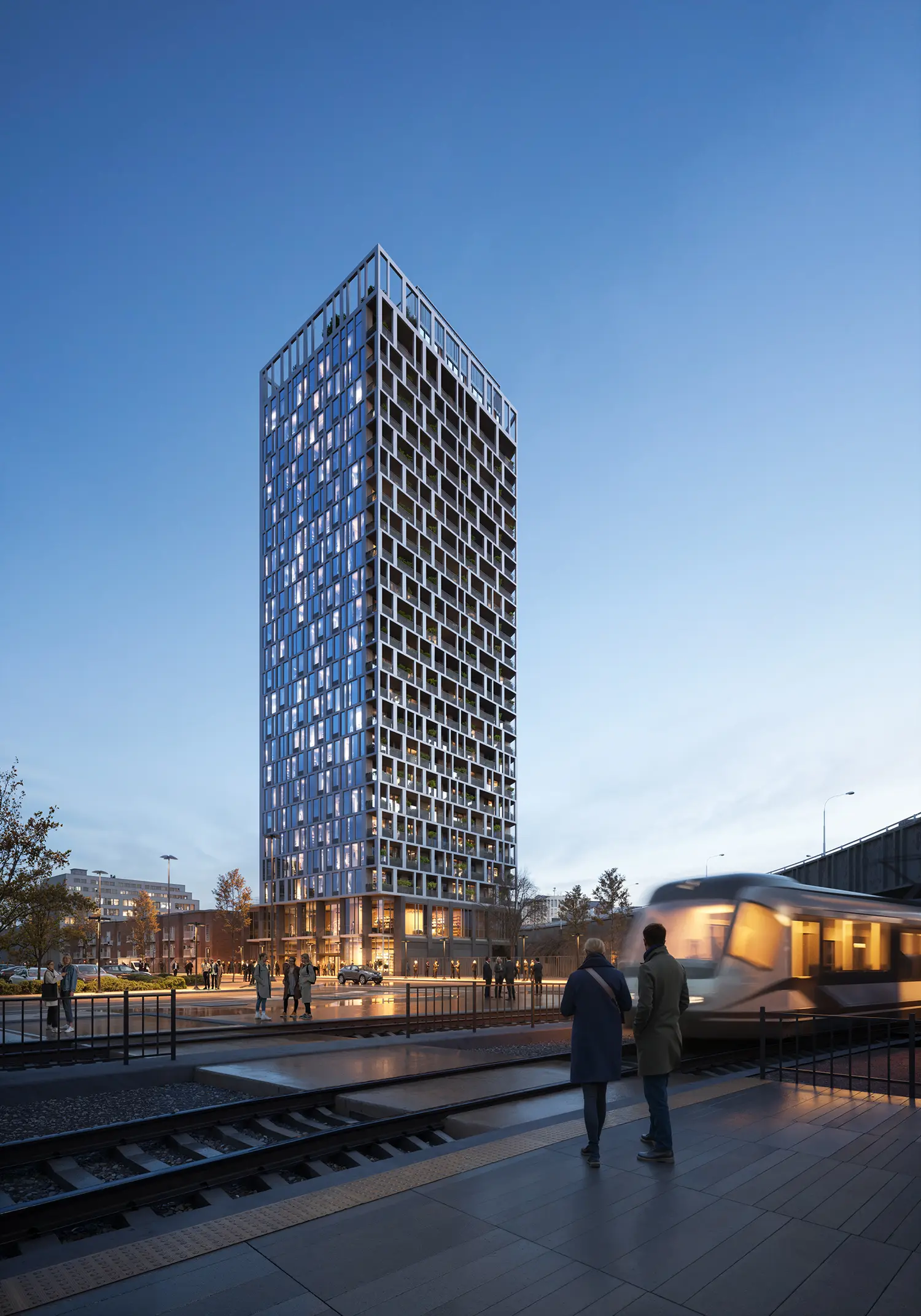
Tower Rendering Techniques and Visual Styles
Once rendering becomes part of the design and approval process, its visual construction demands the same precision as the architecture itself. In tower visualization, composition, contrast, material rendering, and spatial sequencing are not stylistic gestures—they are controlled variables. They guide what is emphasized, what is suppressed, and how the viewer reads height, rhythm, and spatial hierarchy within complex vertical forms.
Aerial View Perspectives and Lighting Scenarios
Aerial angles make it possible to evaluate how the tower interacts with the skyline, infrastructure, neighboring volumes, and key sightlines—elements that are often flattened or fragmented at ground level. However, to fully understand a tower's urban impact, ground-level perspective is equally important. Discover streetscape rendering in detail to explore how street-level visualization reveals the human-scale experience of high-rise development.
Lighting scenarios further expand this evaluative capacity. Daylight sequences can clarify articulation and material logic; dusk or night views emphasize illumination strategies, contrast, and public presence. In early design phases, controlled lighting and aerial positioning are used not for dramatic effect, but to test visibility, hierarchy, and formal legibility across varying urban conditions.
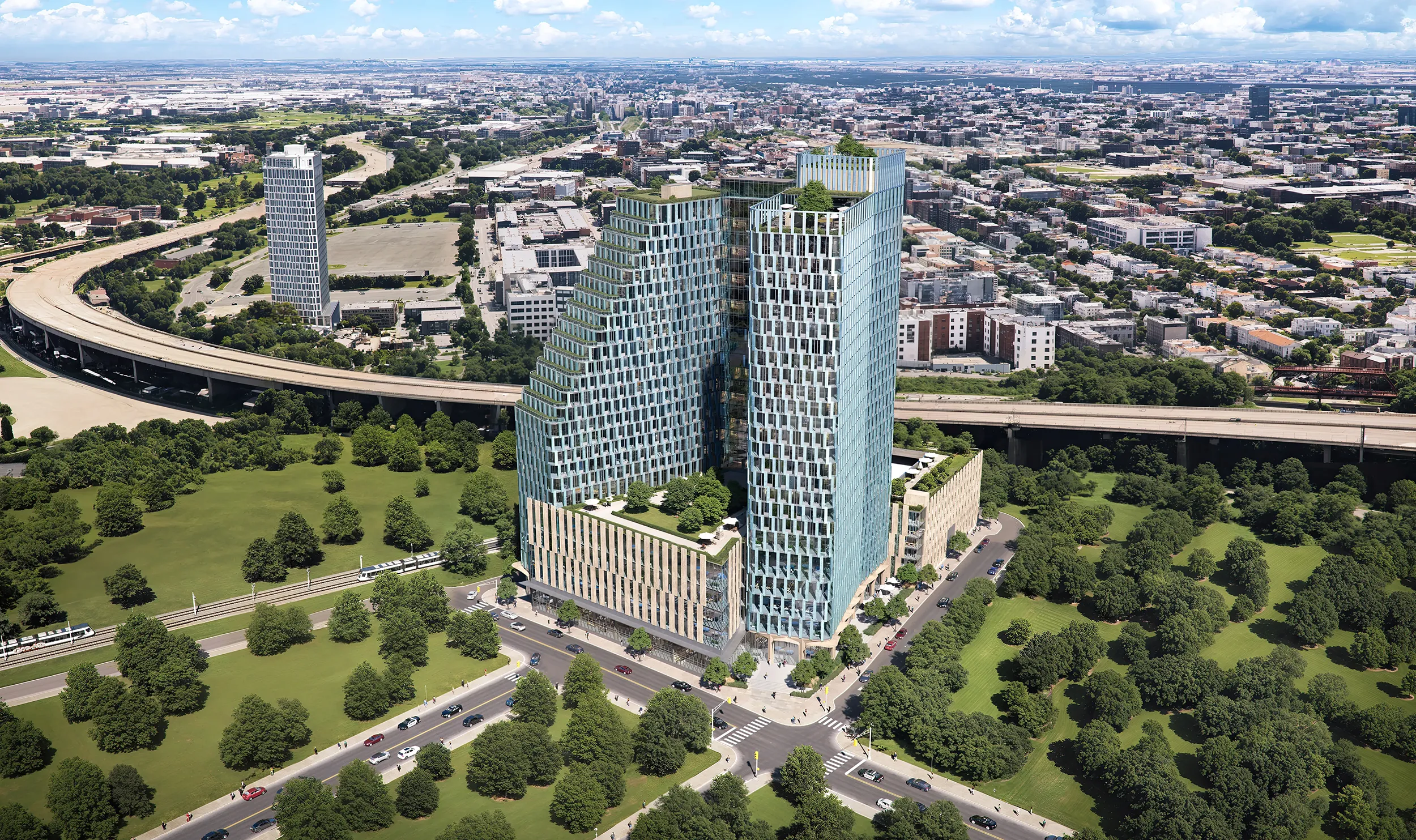
Finding the Balance Between Photorealism and Artistic Flair
A strong tower rendering doesn’t aim for pure realism, nor does it rely on visual effects to carry the image. Its strength lies in clarity: the ability to communicate architectural logic, material behavior, and urban presence without distortion or distraction.
An unbalanced image—over-stylized or overly flat—can weaken perception. Overexposed reflections, artificial lighting, and excessive post-production often mask the architecture instead of enhancing it. Likewise, technically “realistic” renders that show everything with equal emphasis tend to obscure spatial hierarchy and fail to direct the viewer's eye.
Achieving balance means prioritizing visual decisions that serve the design:
- Use directional lighting—such as low-angle morning or evening sun—to reveal façade depth, cast shadows, and break up uniform vertical massing. Unlike flat diffuse light, directional light highlights articulation and helps the viewer read volume, rhythm, and scale.
- Control reflectivity and texture scale to reflect real-world material behavior.
- Emphasize the building’s mass, silhouette, and base condition—where perception begins.
- Avoid lens flares, motion blur, or moody filters that compromise legibility.
- Simplify background and entourage to reduce visual noise and sharpen focus.
Artistic choices are valuable when they reinforce architectural intent. Stylization should not replace design clarity—it should support it. Achieving realism requires both technical control and visual clarity.
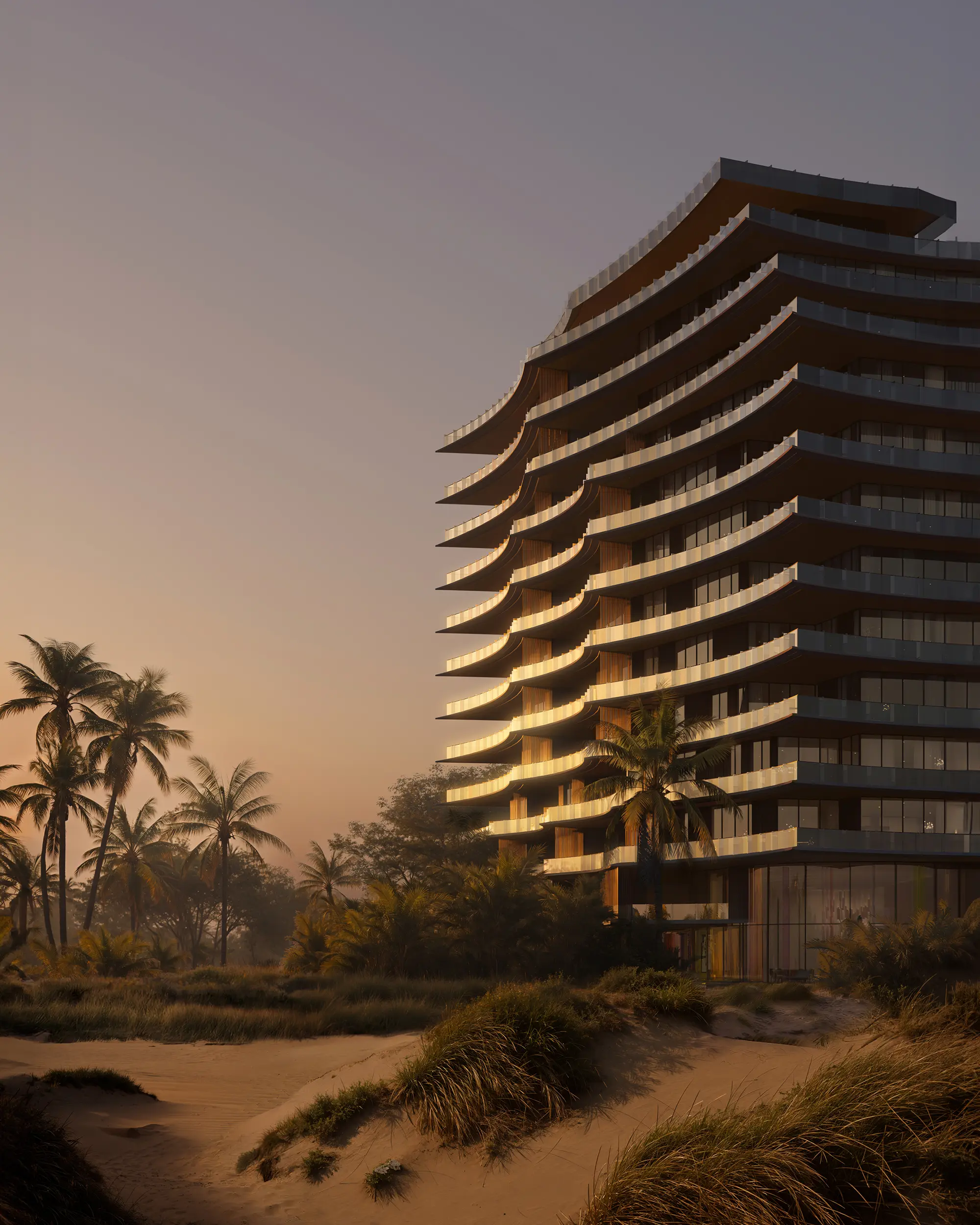
Exterior Detailing in 3D Rendering: Glass, Steel, and Shadows
Contemporary towers are largely defined by glass, metal, and stone—materials chosen for their durability, precision, and clean articulation. Yet in 3D rendering, these very materials present some of the greatest challenges. Their visual behavior depends entirely on lighting angle, context, and physical realism.
Glass must convey both reflectivity and depth; over-polished surfaces or uniform tones break scale and undermine credibility. Steel responds dramatically to variations in gloss— even slight overexposure can flatten the complexity of panel systems. Stone and concrete require subtle surface variation, shadow layering, and accurate texture scaling—otherwise, they risk appearing plastic or artificial.
While these materials dominate tower façades, their visual authenticity only emerges under tightly controlled lighting and rendering conditions. Without such care, images fail to capture architectural intent, even if the geometry is technically correct. Markets with rapidly evolving skylines—from North America to the Asia-Pacific region—increasingly demand this level of technical precision. Discover 3D architectural rendering Australia in detail to explore how these standards are applied in one of the world's most dynamic construction markets.
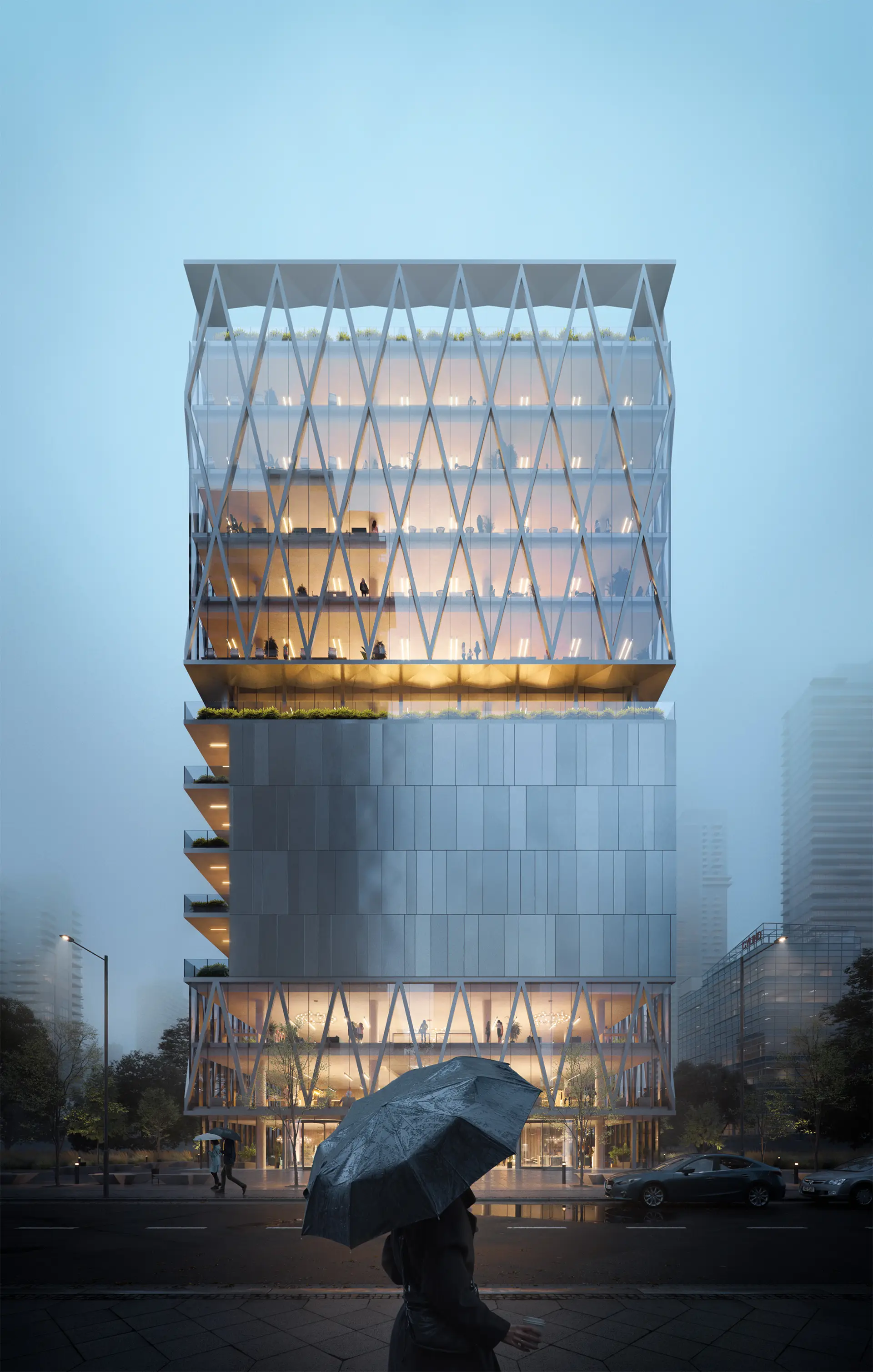
Leveraging HDRI Skies and Contextual Environments
HDRI (High Dynamic Range Image) is a 360° panoramic image that stores real-world lighting data across a wide range of exposure values. In architectural rendering, it is used to simulate natural sunlight, sky color, ambient light, and reflections, allowing the building to respond to its environment with visual accuracy.
In tower visualization, HDRI serves both as the primary lighting source and the ambient context. It controls how glass, metal, and shadows behave—determining whether the building feels visually grounded within its surroundings. While many workflows use generic HDRI presets, high-rise projects demand location-specific HDRIs to accurately reflect the actual geography, atmosphere, and light conditions.
To avoid mismatches, renderers select HDRI maps that correspond to the project’s real location—considering latitude, climate, and density of surrounding development. For example, a tower in Dubai benefits from an HDRI with dry air, a high sun position, and strong directional contrast, which enhances glass reflectivity and casts sharp shadows. That same lighting setup would appear unnatural in London, where an overcast HDRI with soft light and atmospheric gray tones better represents the city’s typical conditions.
Using an inappropriate HDRI—even if technically “high-quality”—can produce reflections that feel empty, shadows that contradict the geometry, or lighting that misrepresents how the building will be perceived in reality.
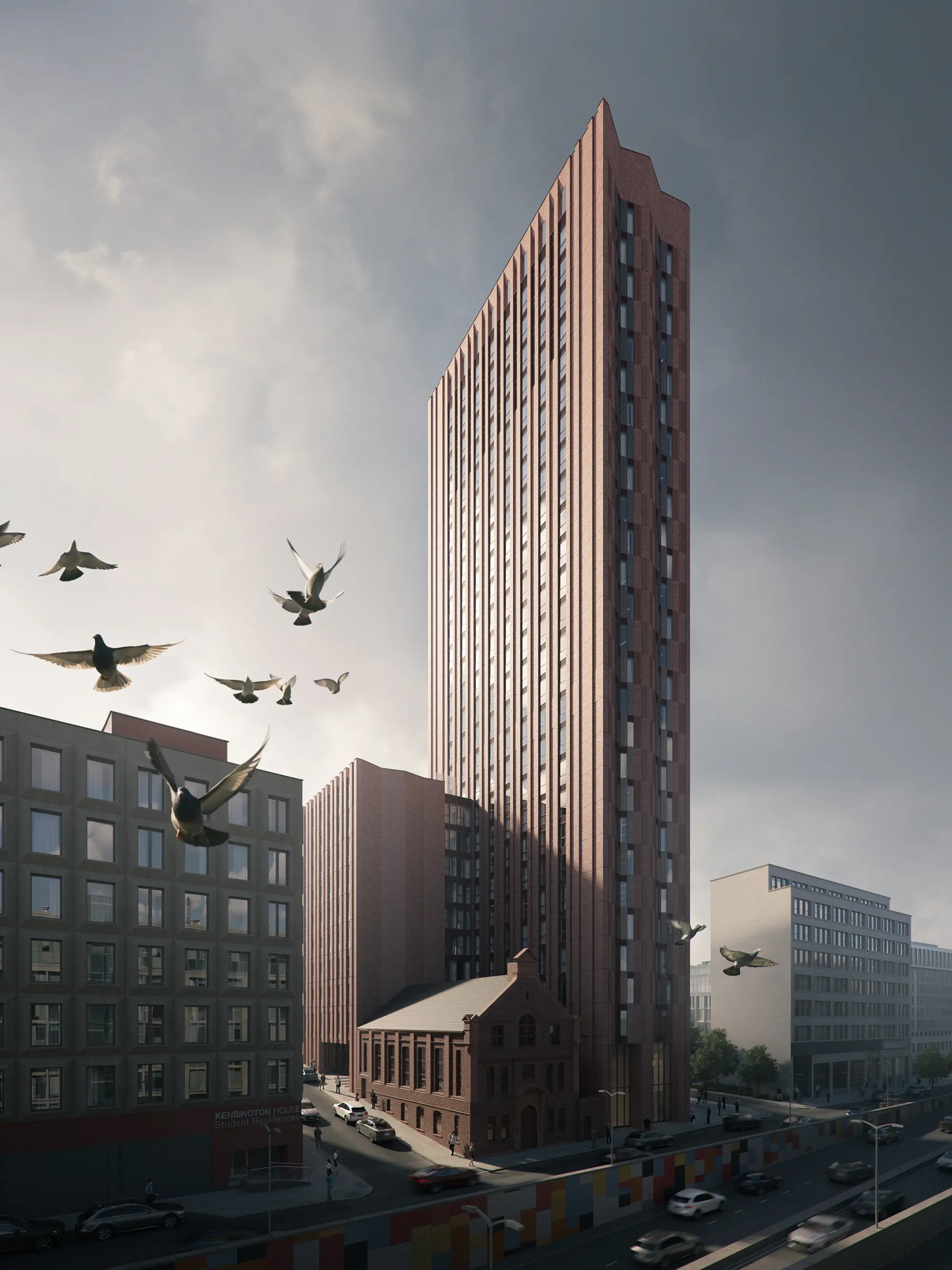
Real-World Applications in Major Cities
CYLIND supports tower rendering in leading cities such as New York, Dubai, and Singapore—where the stakes are high and competition is intense. In such markets, quality architectural visualization helps clarify intent, identify risks, and spark confident investment dialogue.
Tower Rendering Projects That Transformed New York and Other US Cities' Skylines
New York remains one of the most demanding and competitive high-rise markets in the world. Here, accurate and context-sensitive tower rendering directly influences investor confidence and regulatory outcomes. But this level of expectation is no longer limited to New York. As noted in 3D Rendering in the USA, cities like Chicago, Miami, Austin, and Jersey City are rapidly expanding their skylines—and now require the same level of visual rigor.
A notable example is the Grand Jersey development in Jersey City. Designed by Marchetto Higgins Stieve Architects, the project features two interconnected high-rise towers with 515 residential units, rooftop amenities, commercial space, and structured parking.
CYLIND delivered the full visual package for the project, focusing on façade detailing, skyline integration, and long-range aerial perspective. The renderings helped position the project clearly within its urban context and supported communication with stakeholders at every stage.
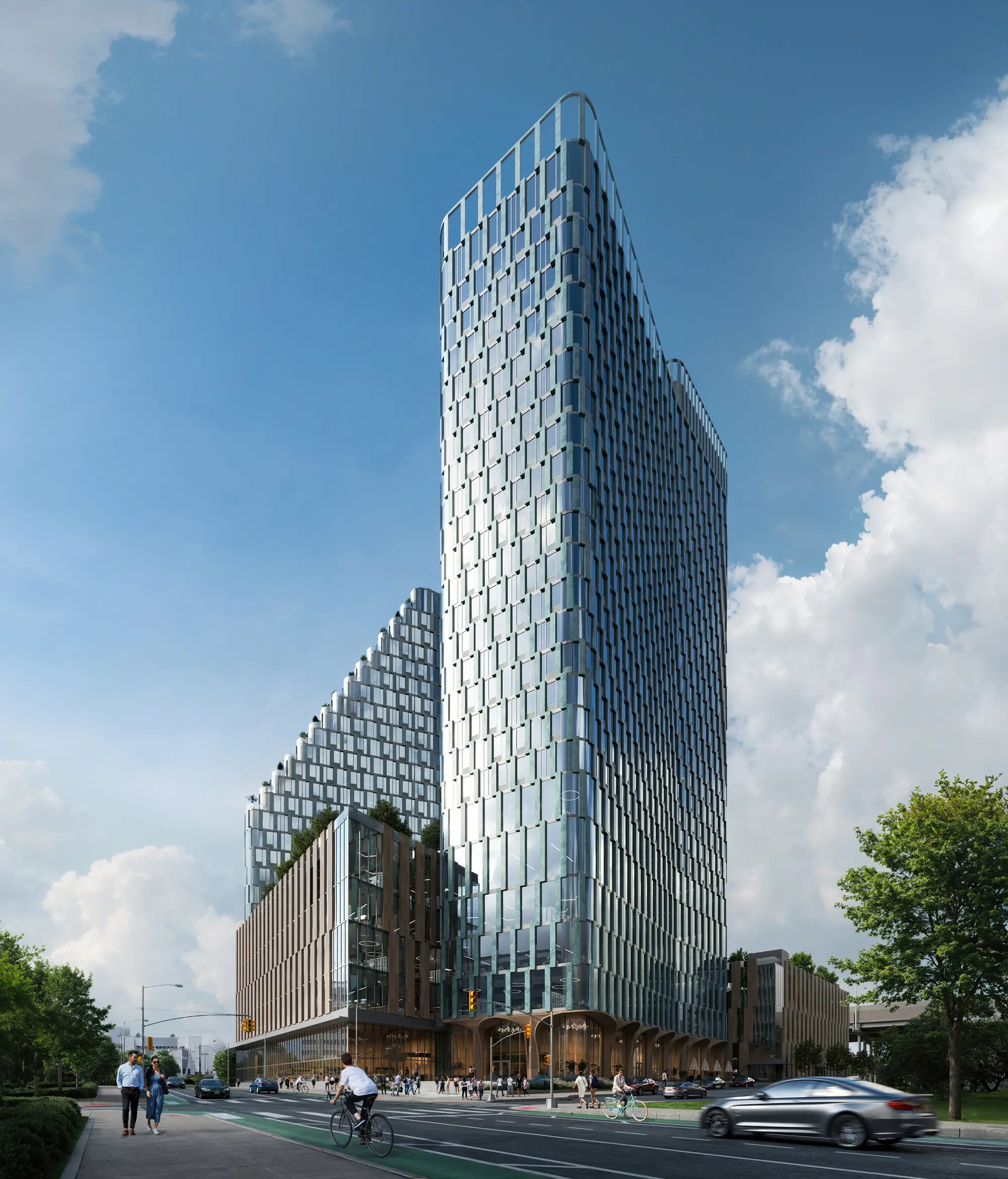
Mixed-Use Developments and Hotel Complexes in 3D
Mixed-use buildings are a growing trend, and 3D rendering services help illustrate how offices, residences, retail zones, and public areas function together—both spatially and programmatically. This approach is equally relevant in hotel design, where architecture combines diverse uses under one roof: lobbies, restaurants, guest rooms, wellness areas, and event spaces all contribute to the experience. These layered scenarios are explored in 3D Hotel Rendering, where visualization must express not just the building’s form, but also how interior and exterior functions relate.
A strong example is the Khobar Tower project in Saudi Arabia, where CYLIND created renderings that captured the building’s vertical rhythm, interaction with its urban surroundings, and the spatial hierarchy between public and private zones.

The Role of 3D Rendering in Digital Twin Development
Today, 3D rendering services often form the visual layer of digital twins. These systems combine BIM, simulation, and visualization, enabling real-time testing of how the building performs in terms of access, daylighting, energy use, and public flow.
In megacities like New York, Tokyo, or London, this approach supports urban-scale decision-making for dense office and residential towers.
Conclusions
Investing in tower rendering means investing in clarity, confidence, and strategic direction. For developers and design teams, it’s the most effective way to bring a vision to life—while minimizing risk and accelerating approvals. For more on how high-rise visualization is tailored for vertical architecture, see our full overview of Skyscraper Rendering Services.
All images © CYLIND
